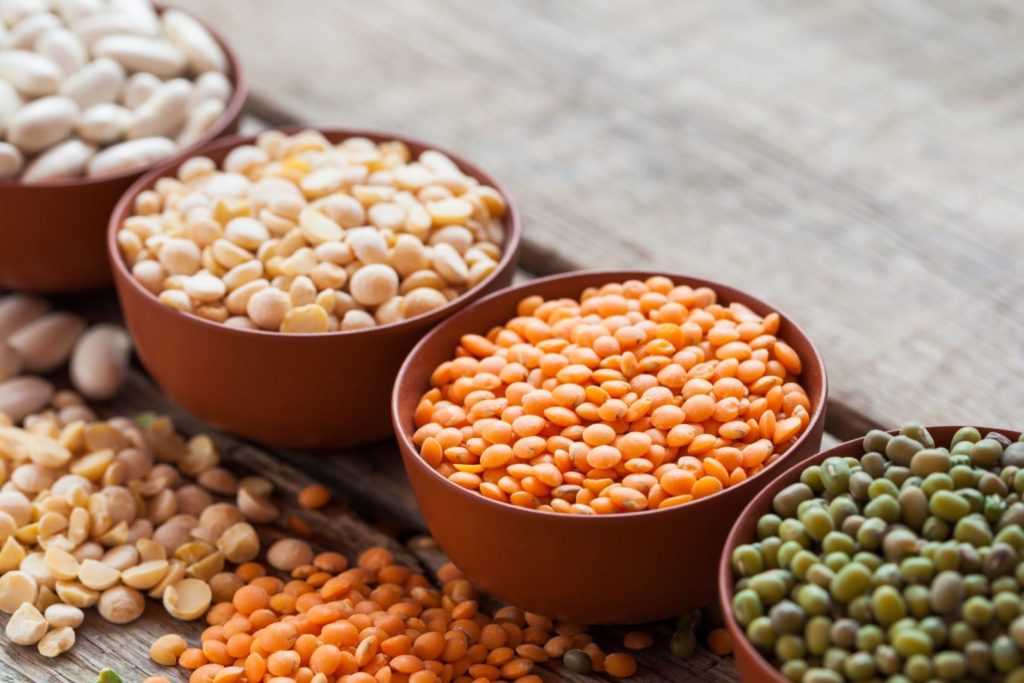Sounds crazy, right?
But allow me to introduce you to the miracle of “resistant starch.”
Resistant starch is a good thing. Scientists are only recently figuring out how good.
Basically, the idea is this: You eat food. It gets broken down by the bugs in your gut. If it’s pretty light-weight stuff, like processed or pre-packaged food, it all gets broken down in your small intestine and there’s nothing left over at the end, to ferment in your large intestine where a lot of your gut bugs live.
If it’s tougher, chewier stuff (think rye, barley, black beans, lentils, things that you have to really chew) then there’s something left over at the end of the digestive process.
This is really important because – the leftovers give the good bugs something to eat.
That’s right, the importance of resistant starch is not that it “keeps you regular.” (Bleurgh, what a horrid phrase.)
No, the importance is that resistant starch feeds the good bugs in your system. And then those happy, well-fed good bugs ferment up that resistant starch that makes it into your large intestine, and produce something called butyrate. 1
What is butyrate?
Butyrate is kind of the Holy Grail of the gut. In order to make our immune systems work properly, we absolutely MUST be eating things that cause our bugs to produce butyrate. Which means we MUST be eating resistant starch. And at the moment, most of us are not.
Guess what doesn’t have resistant starch?
Fast food. Pre-packaged food. Processed food. Refined food.
Want to see this principle acted out in the real world?
Just recently, Tim Spector, a professor of genetic epidemiology at King’s College, London, wanted to learn what happens to your gut if you ate only McDonald’s for 10 straight days. His son, Tom, agreed to do the experiment and sent stool samples to different labs throughout the 10-day period.
The results were described as “astounding.” After just 10 days of eating fast food, his stool samples revealed that his gut microbes were “devastated” – about 40 percent of his bacteria species, amounting to over 1,400 different types, were lost. This severe loss of microbial diversity is a risk factor to obesity and diabetes. 2
Just give a thought to your poor bugs. First we zap them with antibiotics. Then we blast them with sugar. Then for the ones who might just have survived – we eat processed, packaged food that is all consumed – with nothing left over for them. So they starve.
No wonder one in five school-age children have eczema!
Here are some of the great things resistant starch can do for you: 3
- Increase the production of butyrate
- Promotes the growth of good bugs
- Suppress the growth of bad bugs
- Kills off pre-cancerous cells in your gut
- Reduces inflammation
- Help reduce the symptoms of IBS. 4
Resistant starch may help reduce the colorectal cancer risk that is associated with eating red meat. So if you’re a meat eater, it’s absolutely imperative you are eating resistant starch as well! 5
Okay, now we know that we want resistant starch in our diets. Where do we find it?
Good examples of natural sources of resistant starch include bananas that are still slightly green, cooked and cooled potatoes [such as potato salad], whole grains, beans, chickpeas, and lentils.
Legumes are particularly brilliant, it turns out. Black beans, for instance, contain the highest amount of total dietary fibre (43 percent), and 63 percent of their total starch content is resistant starch that makes it to the colon.
Cereal grains, especially barley and corn, do have resistant starch but are lower in fibre than legumes. Heavily processed flours and grain-based products have very little resistant starch. Rice has just under 2 percent, and rolled oats have 15 percent reaching the colon.
“Flours don’t have much resistant starch, because they are processed so much. A lot of grain-based foods also don’t have very much resistant starch. If we eat grain-based materials that are not heavily processed and legumes, which we usually eat after minimal cooking, we get a lot of resistant starch and a lot of fibre as colonic foods,” advise the scientists. 6
Here’s an important tip – you’ve got to consume your resistant starch at room temperature. It needs to be cooked, then cooled, particularly when you’re dealing with starchy products like pasta salad or potato salad. 7
If you’re thinking potatoes, think COLD boiled potatoes. And since we know that white potatoes are high-GI, let’s go with COLD BOILED NEW POTATOES. Hey, that sounds like new potato salad! Note to self…create a gut-friendly new potato salad recipe…
Coming soon! ; )
And of course, don’t forget to drink your kefir every day – to put those good bugs back in there to begin with. Because good bugs + resistant starch = happy immune system!















